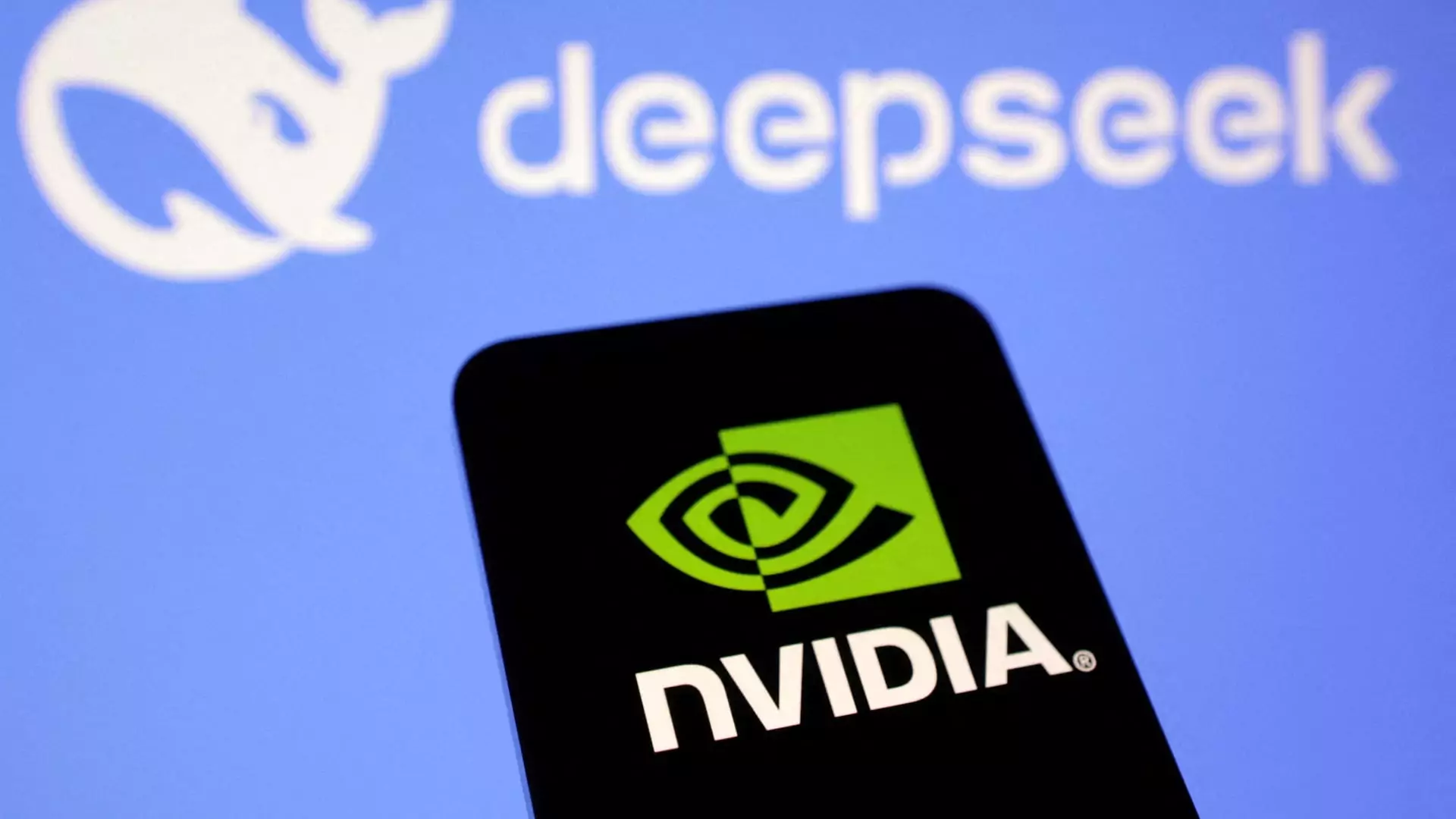In a dramatic turn within the American AI landscape, DeepSeek has surfaced as a formidable player, prompting significant repercussions for the leading chip manufacturer, Nvidia. With DeepSeek’s latest model, the R1, already leading to a staggering reduction in Nvidia’s market capitalization by hundreds of billions, the stage is set for a noteworthy shift in the industry dynamics. While notable figures within the tech sector wrestle with this upheaval, several smaller AI enterprises are optimistic, recognizing that DeepSeek’s entry offers new avenues for growth and innovation rather than posing a threat.
The current AI ecosystem is increasingly leaning towards open-source frameworks, and DeepSeek’s R1 model exemplifies this trend. Whereas established counterparts like OpenAI offer proprietary and costly models, DeepSeek provides open-source alternatives that facilitate greater accessibility for developers. Andrew Feldman, CEO of Cerebras Systems, a prominent AI chip startup, highlighted the fervor among developers to transition from expensive, closed models to more economical open-source options. This transition could redefine the market, as it opens doors for smaller players to compete and innovate without the heavy financial barriers typically associated with proprietary technology.
Feldman also noted that DeepSeek’s influence is fostering unprecedented demand for services provided by companies like Cerebras, demonstrating a growing appetite for alternative solutions in the AI domain. This structural shift echoes historical trends in other tech sectors, such as personal computing and the internet, where reduced costs ignited widespread adoption.
A pivotal aspect of this evolution lies in understanding the difference between AI training and inference. AI training refers to the intensive process of building and refining models, which typically requires substantial compute power. In contrast, inference involves applying these models to make predictions based on new data, often requiring significantly less computational prowess. The R1 model’s capacity to transition the AI cycle from demanding training processes to more efficient inference has positioned DeepSeek as a game-changer in utilizing new chip technologies.
Phelix Lee, an equity analyst specializing in semiconductors, elaborated on this crucial distinction between the two phases. As more companies shift their focus towards inference, opportunities for smaller startups in this segment are emerging. Cheaper inference chips have the potential to democratize AI applications, allowing broader scalability and efficiency without the usual costs associated with advanced training protocols.
The impact of DeepSeek’s rise is not just limited to its direct offerings; it has stimulated demand for inference technologies across various AI chip startups. Notably, companies like d-Matrix have reported booming interest in their capabilities, emphasizing that smaller models can match, if not surpass, the performance of larger proprietary models. This assertion reinforces the idea that traditional powerhouses like Nvidia may face mounting challenges as a plethora of innovative solutions enter the market.
Moreover, the COO of AI chipmaker Etched observed a wave of inquiries from enterprises eager to pivot their investments from traditional training frameworks to inference-driven strategies. The desirability of the R1 model indicates a maturation of the AI market, where smaller companies can now command attention and investment, potentially leading to a new golden age in AI.
As analysts scrutinize DeepSeek’s achievements, it becomes increasingly clear that these developments position the entire AI landscape for significant transformations. A report from Bain & Company suggested that the combination of reduced inference costs and improved training efficiencies could trigger a surge in AI adoption across various sectors, a phenomenon that may resonate well with Jevons’ Paradox. In simple terms, as technologies become cheaper and more accessible, demand surges, leading to expansive growth in the AI domain.
The impact of these changes on major players like Nvidia shouldn’t be underestimated. According to Wedbush, the ongoing global demand for AI technologies is projected to grow substantially, creating ample space for smaller companies to thrive. Groq’s COO, Sunny Madra, eloquently expressed this sentiment, noting that the overwhelming need for computational resources, particularly tokens in AI processing, signifies a turning point for smaller entities to leverage their strategic advantages against industry titans.
DeepSeek is not merely a player in the AI field; it is a catalyst for change. Its open-source approach and innovative R1 model are shaking the foundations of the industry, presenting unprecedented opportunities for smaller companies and reshaping the competitive landscape. As the AI sector recuperates from these seismic shifts, the emergence of accessible technologies will undeniably foster a new era of growth and collaboration, paving the way for a richer future in artificial intelligence. This scenario stands as a testament to the resilience of innovation, where the undercurrents of change can yield significant developments in technology and industry dynamics.

